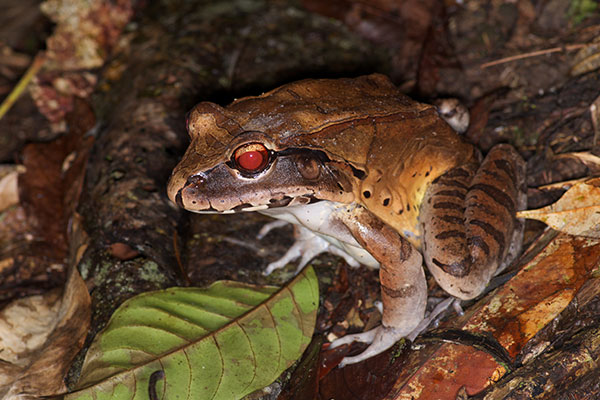Leptodactylus pentadactylus
—
Smokey Jungle Frog
Also known as:
Smoky Jungle Frog, Smokey Frog, South American Bullfrog
Leptodactylus pentadactylus was split in 2005. The ones in Costa Rica are now classified as L. savagei.
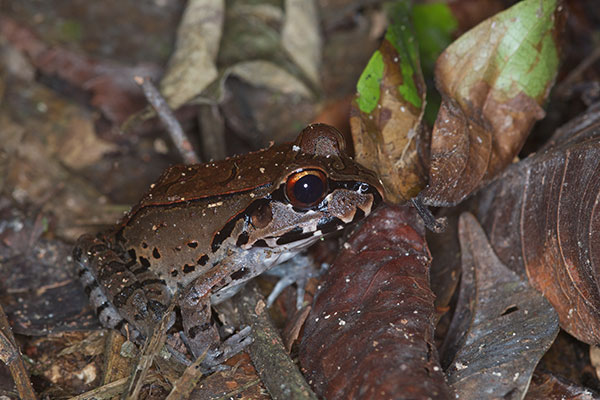
The first Smokey Jungle Frog I saw in Peru was this small one, about three inches long. At first I thought it might be Leptodactylus knudseni, but its dorsolateral ridges extend all the way back (past the sacrum, to the groin), which is a characteristic that distinguishes these two species.
Here is a complete list of the herps I saw in the wild on my 2013 MT Amazon Expeditions trip.
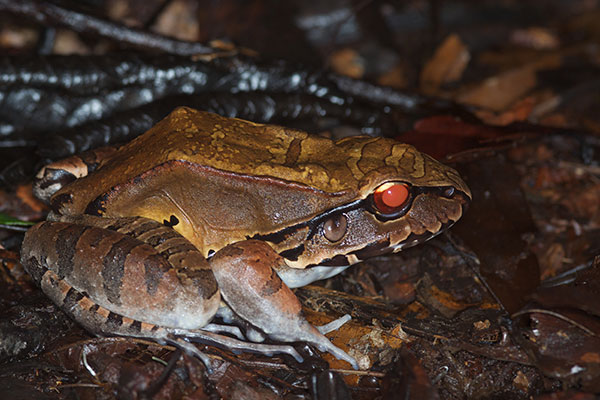
This was a large individual. The eyes of these nocturnal frogs have a light-catching property that causes them to often reflect bright red when photographed with a flash.
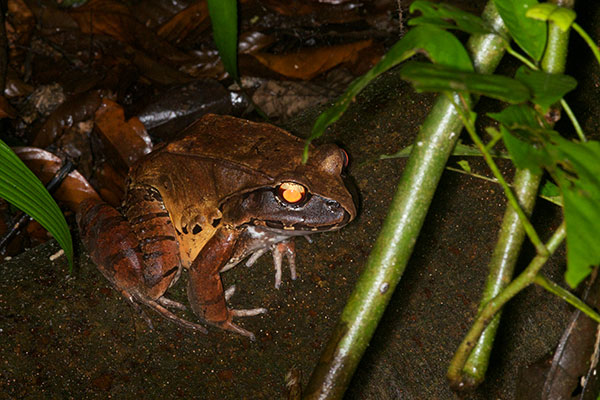
On our last night at Santa Cruz, Mitch Berk and I saw this monster frog, no doubt the largest frog I've ever seen in the wild. I estimated it at the size of a bowling ball, though it's not impossible that this was a slight exaggeration. When we got back to camp, I was telling Marisa Ai Ishimatsu that I had seen the largest Smokey Jungle Frog that anyone had ever seen, and no doubt the largest one that had ever existed. And did she believe me? No! She dared to argue, claiming that *she* had seen one that very evening so huge that it was impossible that mine was bigger. I bumped up my claims for emphasis, saying that it had been at least the size of a Volkswagen Beetle, but still she would not do the honorable thing and simply agree that the frog I had seen was clearly larger than the one she had seen.
Then she paused and asked "Was your frog in that big pile of broken-up vegetation right near the beginning of the Viper Trail?". Sure enough, we had each seen the same frog.
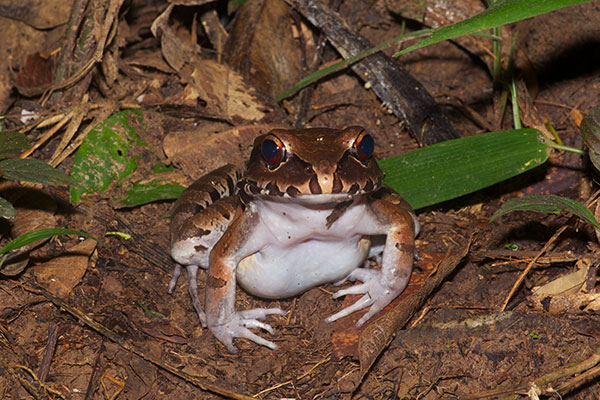
It turns out that if you take a flash photo from directly in front of a big fat Smokey Jungle Frog, you don't get the evil-looking glowing red eyes.
Here is a complete list of the herps I saw in the wild on my 2014 MT Amazon Expeditions trip.
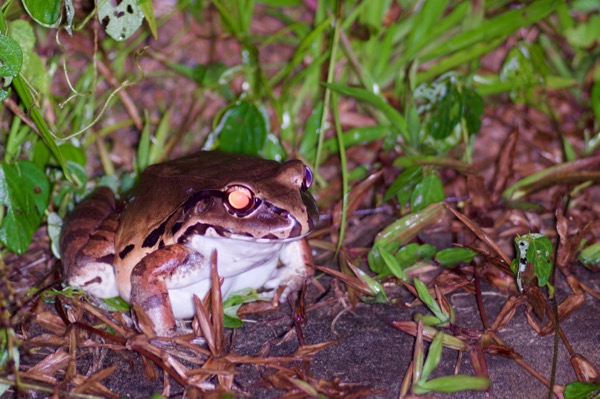
I really need to start experimenting with off-camera flash to avoid these ridiculous glowing eyes.
My Travelogues and Trip Lists page includes a complete list of the herps I saw in the wild on my 2016 MT Amazon Expeditions trip.
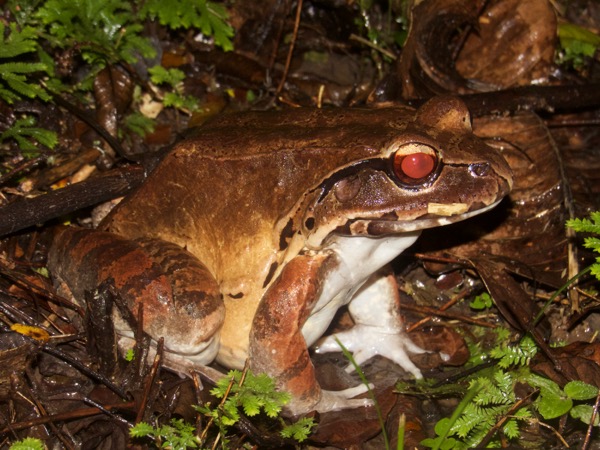
A particularly large individual, with the usual satanic eyes. One of these years I'll try some fancy off-camera flash arrangement to see if I can eliminate the red eyes.
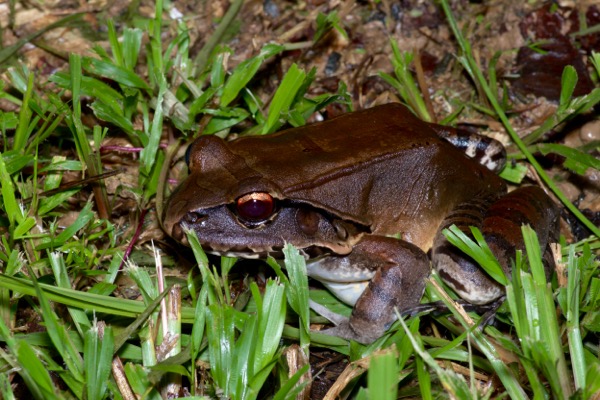
One way to minimize the red-eye effect is to take the photo at an aesthetically displeasing angle.
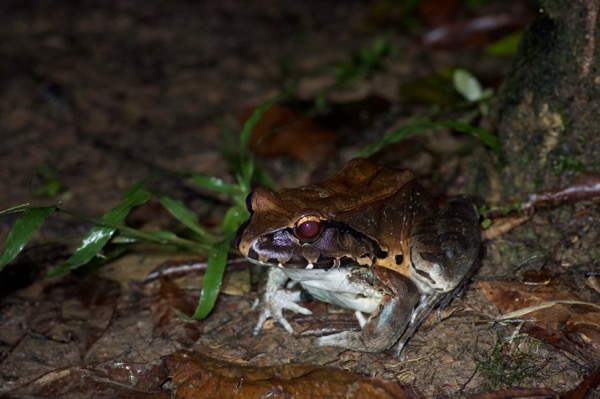
A decent but not great angle, and only slightly pinkish eyes. Better, I guess?
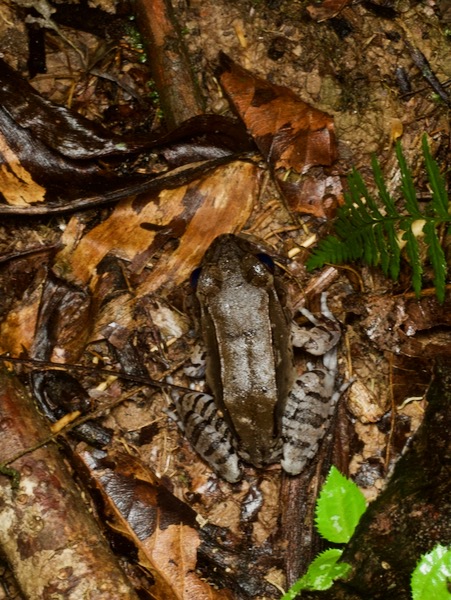
I'm not completely sure this is L. pentadactylus rather than one of the other nearby Leptodactylus species, but that seems like the most likely candidate and it hopped away before I could get a side view.
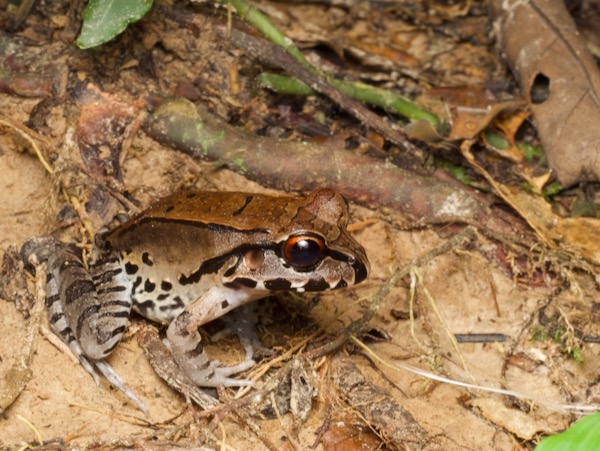
On this trip I had better diffusion for my flash so the glowing red frog eyes should be a thing of the past.
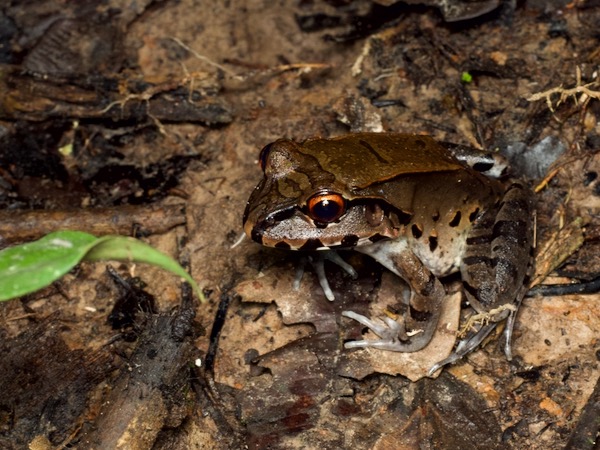
I was hoping to see one of the huge individuals with my new anti-red-eye technology, but had to settle for medium sized individuals like this.
Online references:
- List of English, Portugese, and Spanish names for Leptodactylus frogs
Printed references:
- Bartlett, R.D., and Bartlett, P. 2003. Reptiles and Amphibians of the Amazon: An Ecotourist's Guide
- Duellman, W.E. 2005. Cusco Amazónico: The Lives of Amphibians and Reptiles in an Amazonian Rainforest
- Rodríguez, L. O. and Duellman, W. E. 1994. Guide to the Frogs of the Iquitos Region, Amazonian Peru
